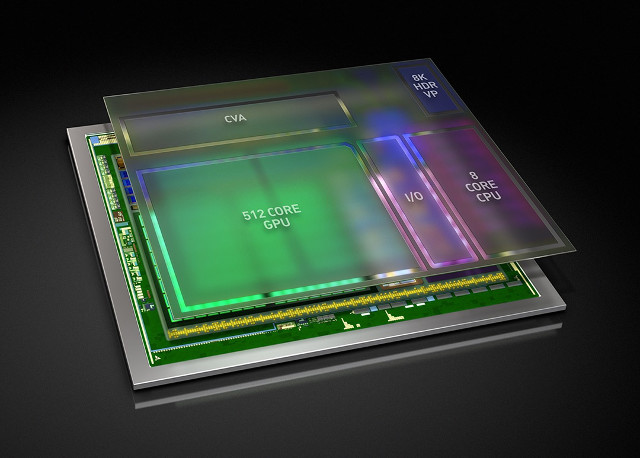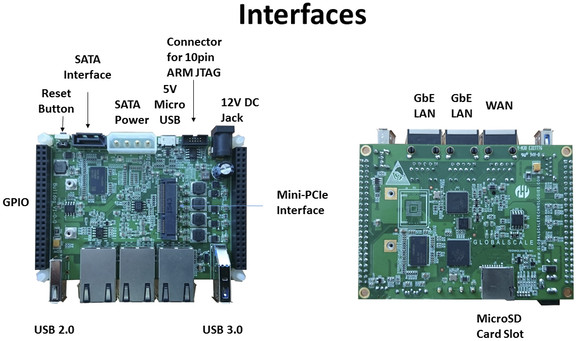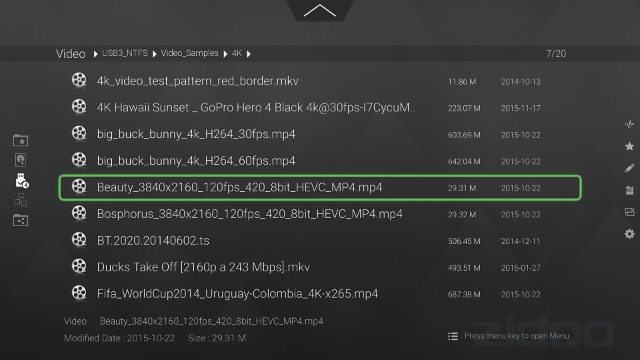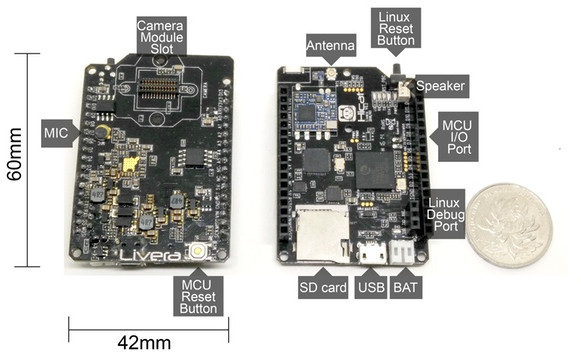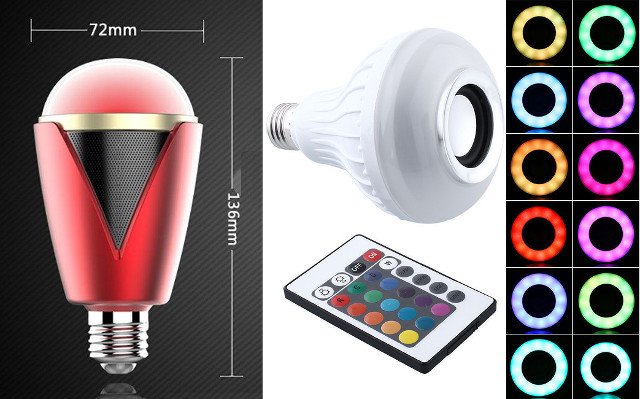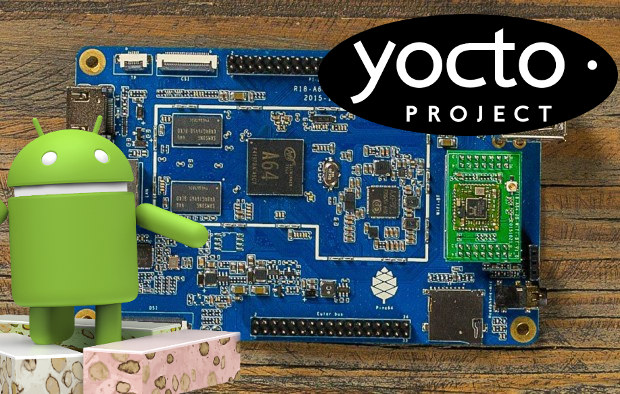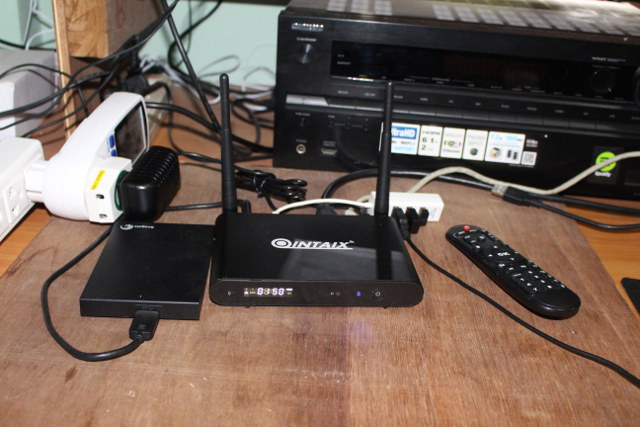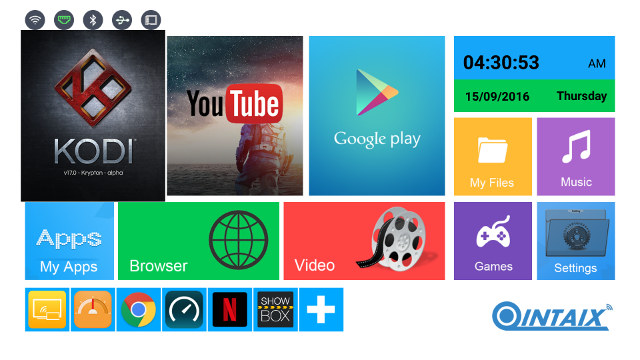Nvidia has introduced the successor to their Parker SoC mostly targeting self-driving cars and artificial intelligence applications, with Xavier SoC featuring 8 custom ARMv8 cores, a 512-core Volta GPU, a VPU (Video Processing Unit) supporting 8K video decode and encode and HDR (High Dynamic Range), as well as a computer vision accelerator (CVA). The processor will deliver 20 TOPS (trillion operations per second) of performance, while consuming only 20 watts of power, and since it’s designed specifically for autonomous cars, it will comply with automotive safety standards such as ISO 26262 functional safety specification. Anandtech published a comparison table with Tegra X1 (Erista), Parker, and Xavier using currently available information. Xavier Parker Erista (Tegra X1) CPU 8x NVIDIA Custom ARM 2x NVIDIA Denver + 4x ARM Cortex-A57 4x ARM Cortex-A57 + 4x ARM Cortex-A53 GPU Volta, 512 CUDA Cores Pascal, 256 CUDA Cores Maxwell, 256 CUDA Cores Memory ? LPDDR4, […]
Marvell ESPRESSOBin Board with Gigabit Ethernet, SATA, mini PCIe, and USB 3.0 To Launch for $39 and Up (Crowdfunding)
I can often read people hoping for an inexpensive community board for network, storage and connectivity applications with high speed interface like SATA, multiple Gigabit Ethernet port, USB 3.0 and/or mini PCIe, and that’s exactly what Globalscale Technologies is about to offer with their Marvell ARMADA 3700 based ESPRESSOBin development board to go for $39 and up via Kickstarter. Marvell ESPRESSOBin board specifications: SoC – Marvell Armada 3700LP (88F3720) dual core ARM Cortex A53 processor up to 1.2GHz System Memory – 512MB DDR3 or optional 1GB DDR3 Storage – 1x SATA interface, 1x micro SD card slot with footprint for an optional 4GB EMMC Network Connectivity 1x Topaz Networking Switch 2x GbE Ethernet LAN 1x Ethernet WAN 1x MiniPCIe slot for Wireless/BLE periphereals USB – 1x USB 3.0, 1x USB 2.0, 1x micro USB port Expansion – 2x 46-pin GPIO headers for accessories and shields with I2C, GPIOs, PWM, UART, […]
4K Video Playback and HDMI Audio Passthrough in Realtek RTD1295 based Zidoo X9S TV Box
Zidoo X9S is a high-end 4K TV box and HDMI recorder based on Realtek RTD1295 processor. I’ve already checked its hardware, and run some benchmarks, so after a successful OTA firmware update, I decided to test 4K videos and HDMI audio pass-through capabilities of the device with ZDMC, Zidoo’s fork of Kodi 16.1, and “Media Center” internal player. Before starting playing 4K videos and testing HDMI audio pass-through, you’ll want to make sure to configure video output to a 4K UHD resolution and framerate such as 3840×2160 @ 60 Hz, as well as change HDMI output audio in Sound & notification settings. The options are a little different from the other boxes as beside RAW and 2-channel LPCM, Zidoo X9S also supports multi-channel LPCM. In order to test HDMI audio pass-through, it must be set to RAW. You may also want to check Playback options to switch to 24 Hz […]
HICAT.Livera Machine Vision Board and Robot Kit Feature HiSilicon Hi3518 SoC (Crowdfunding)
HiSilicon Hi3518 ARM9 processor is mostly being used in IP cameras, but Hicat startup decided to combined the camera processor with an Atmel MCU and a MT7601 WiFi module to create a wireless camera board to be used with OpenCV, and even provide a complete affordable robot kit with the board. Hicat.livera board specifications: Vision Core – Hisilicon Hi3518 ARM9 processor @ 440 MHz Storage – 16MB flash + micro SD card MCU – Atmel ATmega32U4 AVR micro-controller Connectivity – 802.11 b/g/n WiFi via Mediatek MT7601 module + u.FL antenna connector Camera interface with provided 140 deg. camera using Omnivision OV9712 720p (1280×720) sensor USB – 1x micro USB port for power and programming Audio – Built-in microphone, speaker header Sensors – MPU6050 accelerometer and gyro Expansion – 2x GPIO headers with GPIOs, I2C, SPI, serial, PWM, digital, analog and power signals. Misc – MCU reset and Linux reset buttons, […]
$16 and Up RGB LED Bluetooth 4.0 Light Bulbs include Speakers
I’ve just stumbled upon “H1007 Smart E27 Bulb Bluetooth 4.0 Speaker” on GeekBuying. It’s a smart Bluetooth 4.0 RGB LED E27 light bulb that also include a speaker, and sells for $22.59 shipped. I find it’s a good idea, and after looking for other models, I’ve found the $99 Twist light, as well as a much cheaper “OY-QP-BM13” model on eBay going for $15.99. I’ll look at (HZ-)H1007 specifications first: Light Bulb 5W; adjustable RGBW; 330 Lumens; Color temp: 6500K Screw Type – E27/E26 Connectivity – Bluetooth 4.0 LE up to 20 meters range Audio – 3W amplifier; 3D surround audio Voltage – 100 to 240V 50/60Hz Dimensions – 72 mm diameter x 136 mm length Weight – 146 grams The body of the light bulb is available in white, red, golden, and blue, and it ships with a user’s manual in English and Chinese. I could not find the […]
Android 7.0, Android TV 7.0, and Yocto Project Ported to Pine A64 Boards
A few weeks ago, Raspberry Pi 3 got an Android 7.0 Nougat port, and it’s usable for some app even simple games like Angry Bird, but there are still problems with 3D graphics, and hardware video decoding. But thanks to Pine64 forum’s member Ayufan, we now have Android 7.0 and Android TV 7.0 for Pine A64 boards with 1GB or more memory with 3D graphics, and hardware video acceleration for most apps. Everything is said to pretty much work, but there are some known issues, such as camera support (being worked on now), touchscreen support (not tested), YouTube is limited to 360p/480p as it does not support hardware video decoding, and Widevine DRM is not supported. Android 7.0 has also been shown to be about 10 to 15% faster than Android 5.1.1 in GeekBench. Ronnie Bailey has shot a video showing Pine A64 running Android TV 7.0 Nougat. If you […]
Qintaix Q912 Android Box Review – Part 2: Android 6.0, Kodi 17, Benchmarks, etc…
Qintaix Q912 is one of the many octa-core Android boxes based on Amlogic S912 processor. I’ve already shown photos of the device and its internal design in the first part of Qintaix Q912 review, so today I’ll report the results of my testing with Android firmware, video & audio capabilities in Kodi 17 Alpha 3 (pre-installed), features supports, benchmarks, and other comment. I will also be interesting to find out how it compares to M12N TV box, also based on Amlogic S912 processor. First Boot, Settings, and First Impressions I’ve connected all necessary cables including HDMI and Ethernet, added some USB devices including two 2.4 GHZ USB dongles for my air moues and wireless gamepad, a USB keyboard to take screenshots, and a USB 3.0 hard drive to the USB 2.0 ports of the device. Once you apply power, the LED is turn red, and you need to press the […]
Kodi 17 Setup and Audio/Video Support in Amlogic S912 TV Boxes (as of September 2016)
Most people installing Kodi are going to select Kodi 16.1 as of today, since it is the latest stable release. But I’m currently reviewing Qintaix Q912 TV box based on Amlogic S912 octa-core processor, whose Android 6.0 firmware includes Kodi 17 Alpha 3, so since that’s the first time I run Kodi 17 “Krypton”. I’ve decided to report my experience about the interface, and the current status about audio and video support by testing some 4K videos, and audio files. I used the latest available firmware for the test. Kodi 17 can be found on the main launcher, and for the first launch, we’ll see the default skin has been replaced from Confluence to the new Estuary skin. It’s a little confusing a first. We can access the setup menu by going to the icon on the bottom left, just on the right on the power button, and then select […]


